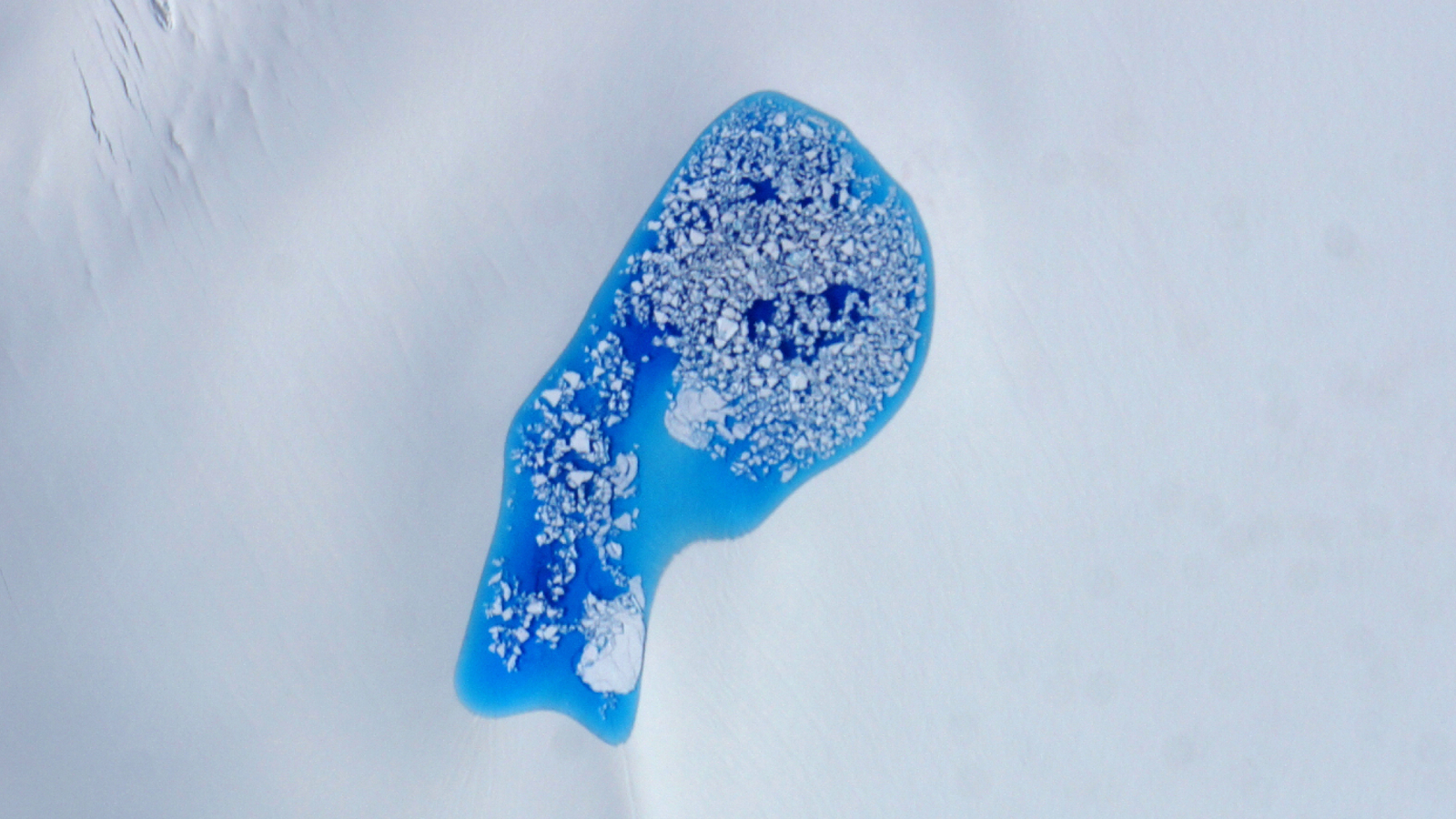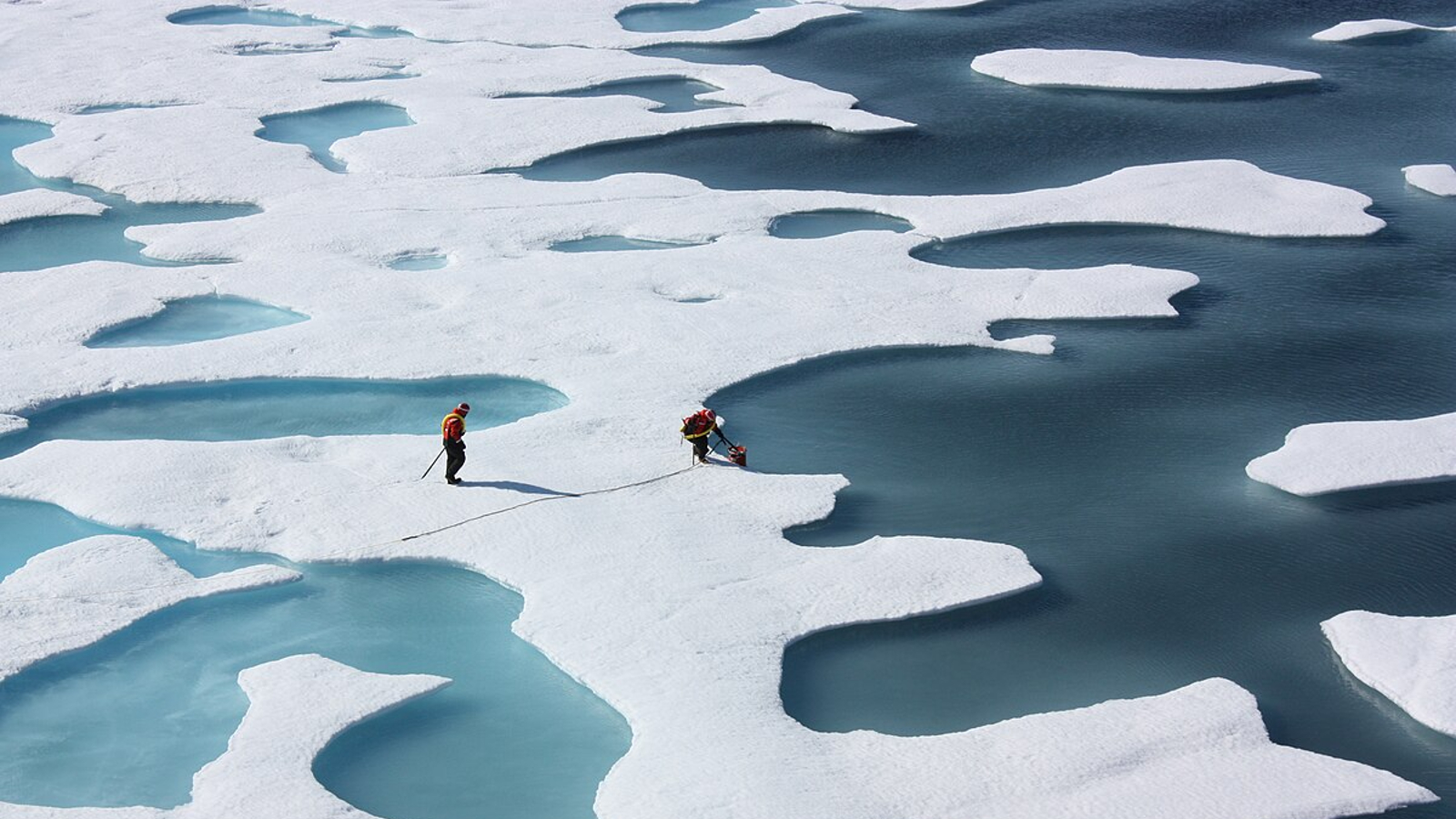Earth from space: Massive blue 'melt pond' in Arctic glacier is an eerie sign of things to come
A 2014 photo shows a massive, iceberg-littered pool of vibrant blue meltwater sitting alone on top of a glacier in Alaska. Similar "melt ponds" are becoming increasingly common in the Arctic due to climate change and are further accelerating the rate of ice loss across the region.

Where is it? An unnamed glacier in southeastern Alaska
What's in the photo? A large pool of water sitting on top of the ice
What took the photo? NASA's ER-2 airplane
When was it taken? July 16, 2014
This 2014 aerial photo shows what looks like an unusually large and deep puddle of vibrant blue meltwater sitting on top of an unnamed Alaskan glacier. Similar melt ponds are becoming more common across the Arctic due to climate change and are further accelerating the rate at which the region is losing its ice.
The striking melt pond, which is littered with hundreds of tiny icebergs, is around 2,300 feet (700 meters) across at its widest point. The pool's vibrant blue color makes it seem like it is exceptionally deep. However, this is likely just an illusion caused by the ice below. On average, Arctic sea ice melt ponds are only around 9 inches (22 centimeters) deep, according to a 2022 study. However, it is unclear exactly how deep this puddle is.
Zoomed-out versions of the photo show that the melt pond was surrounded by nothing but snow for miles. Normally, melt ponds are grouped close together in clusters. It is unclear what caused this pond to grow so large in isolation.
The icy lagoon was spotted by the Multiple Altimeter Beam Experimental Lidar (MABEL) instrument onboard NASA's ER-2 airplane — a special research plane that can fly more than twice as high as commercial jets. The aircraft was sweeping the area as part of a wider survey of Arctic melt ponds, and it captured hundreds of similar photos. But this pond was one of the largest observed, according to NASA's Earth Observatory.
Related: See all the best images of Earth from space

Melt ponds form in late spring and early summer as the ice thaws from the warmth and the resulting water pools in depressions within the ice. These features have always been present in the Arctic. However, they have become much more common in recent years due to the effects of human-caused climate change.
The increased appearance of melt ponds is concerning for researchers because the dark blue puddles absorb much more sunlight than snow and ice do. This causes the ponds to warm up and melt more of the ice around them, especially when they appear on fragile sea ice. This "positive feedback loop" could end up triggering a runaway effect in which the rate of melting exponentially increases.
Sign up for the Live Science daily newsletter now
Get the world’s most fascinating discoveries delivered straight to your inbox.
As a result, the number of melt ponds that appear each summer is a good predictor of a year's Arctic's minimum sea ice extent, or the point at which the surface area of the region's sea ice is lowest, Mongabay recently reported.
However, despite the importance of monitoring these melt ponds, some researchers say we still do not understand them enough to make such predictions.
In a 2023 review article, experts wrote that "limited observations of melt ponds are far from adequate," which is leading to a "lack of spatial and temporal scale-knowledge" about when and where they form. This fosters uncertainty about their role in the climate crisis. However, this problem could be remedied by increasing the amount of aerial observations of the Arctic and using artificial intelligence to help comb through the data, the review authors argue.

Harry is a U.K.-based senior staff writer at Live Science. He studied marine biology at the University of Exeter before training to become a journalist. He covers a wide range of topics including space exploration, planetary science, space weather, climate change, animal behavior and paleontology. His recent work on the solar maximum won "best space submission" at the 2024 Aerospace Media Awards and was shortlisted in the "top scoop" category at the NCTJ Awards for Excellence in 2023. He also writes Live Science's weekly Earth from space series.









